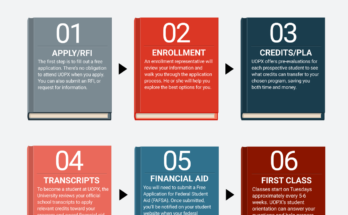For transfer student admission in the USA, meet GPA requirements and submit all necessary documents. The process is generally more selective than undergraduate admission.
Transferring to a university in the USA as an international student involves contacting your academic advisor, starting the process early, and ensuring all payments and documents are in order. Universities often have specific criteria for transfer admissions, with GPA requirements varying between institutions.
Understanding the intricacies of the transfer process can greatly impact your chances of acceptance. This guide will explore the essential steps and considerations for successfully transferring to a US university as a student seeking a new academic opportunity.

Credit: www.commonapp.org
Understanding The Transfer Student Admission Process In The Usa
Transferring to a new college or university can be an exciting yet challenging endeavor for many students. When considering transferring to a university in the USA, it’s crucial to understand the admission process to ensure a smooth transition. From factors influencing the decision to transfer to the importance of meeting with an academic advisor, each step is vital in determining the success of the transfer. Let’s delve deeper into the nuances of the transfer student admission process in the USA.
Why Do Students Want To Transfer?
Many students consider transferring to another college or university for various reasons. Whether it’s to pursue a different academic program, seek a better fit socially, or move closer to home, the motivations for transferring are diverse and deeply personal. Understanding the underlying reasons behind the desire to transfer is essential for a successful transition.
Factors To Consider Before Transferring
Prior to making the decision to transfer, several factors should be carefully evaluated. Considerations such as academic goals, campus culture, location, and financial implications play a significant role in determining the suitability of a new institution. It’s crucial for students to weigh these factors thoughtfully before initiating the transfer process.
The Importance Of Meeting With An Academic Advisor
Meeting with an academic advisor is a crucial step in the transfer process. Academic advisors can provide valuable guidance on credit transfers, degree requirements, and the overall transition to a new institution. Their expertise is invaluable in ensuring a seamless transfer experience, making it essential for students to schedule a meeting early in the decision-making process.
Assessing The Requirements For Transfer Admission
Gpa Requirements For Transfer Students
When considering transferring to a new college in the USA, understanding the GPA requirements is crucial. Most universities have specific GPA thresholds that transfer students must meet to be considered for admission.
Application Components For Transfer Students
As a transfer student, you need to compile several application components to complete your transfer application. These components typically include transcripts, letters of recommendation, a personal statement, and any additional documents required by the college.
Challenges And Selectivity For Transfer Students
Navigating through transfer student admission requirements in the USA can pose challenges due to high selectivity. The process demands a strong GPA and thorough evaluation of credit transfers. It’s crucial to start early and gather all necessary documents for a successful university transition.
Understanding The Selectivity Of Transfer Admission Process
Transferring to a new university can come with its fair share of challenges, and for transfer students, the admission process can be both selective and competitive. It’s important to have a clear understanding of the selectivity involved when considering a transfer to a different institution. When it comes to transfer admissions, universities tend to have a more rigorous process compared to undergraduate admissions. This is especially true for prestigious institutions that already have a highly competitive admission rate for freshmen. The reason behind this selectivity is that universities want to ensure that transfer students meet their academic standards and have the ability to succeed in the new environment.
Comparison To Freshman Admission Rates
To better appreciate the selectivity faced by transfer students, it is helpful to compare transfer admission rates to freshman admission rates. While freshman admissions are often competitive, transfer admissions can be even more challenging. For instance, a university that accepts about 20% of its freshman applicants may only accept 10% or less of its transfer applicants. The limited number of available spots for transfer students adds to the competitiveness of the process. Universities typically have a variety of reasons for this selectivity. They might have limited resources or space available for transfer students. Additionally, they want to ensure that the new student body is diverse and balanced, both academically and in terms of extracurricular interests and experiences. In conclusion, transfer students face a unique set of challenges and selectivity during the admission process. It’s essential for transfer applicants to recognize this aspect and carefully consider their options. By understanding the selectivity involved and comparing it to the freshman admission rates, transfer students can better prepare themselves for the journey ahead.
Preparation And Steps For Transferring To A Us University
Transferring to a US university involves meeting specific admission requirements as a transfer student. Start by researching and contacting advisors, assessing credit transfers, and gathering all required documents. Additionally, prepare for a thorough application process, including updating SEVIS (Student and Exchange Visitor Program) for international students.
Communicating With Academic Advisors
When it comes to transferring to a US university, one of the first steps you should take is to communicate with your academic advisor. Your university will have a policy regarding the transfer process, and your academic advisor will be able to provide you with valuable information and guidance. They can help you understand the requirements for transferring, the necessary documents, and assist you in choosing the right courses to ensure a smooth transition. It is important to reach out to your academic advisor early in the process to avoid any potential delays or misunderstandings.
Financial Preparations For The Transfer Process
Another crucial aspect of transferring to a US university is making financial preparations. Transferring to a new institution often comes with additional expenses, such as application fees, housing costs, and transportation. It is essential to have a good, long conversation about financial aid with your academic advisor or a financial aid counselor. They can provide you with information on scholarships, grants, and loans that may be available for transfer students. Additionally, you should start scoping out schools and researching their tuition costs to ensure you have a clear understanding of the financial obligations associated with transferring.
Gathering Essential Documents
To transfer to a US university, you will need to gather essential documents. These documents may include your academic transcripts, letters of recommendation, standardized test scores, and a well-crafted personal statement. It is important to check the requirements of each university you are considering transferring to, as the document requirements may vary. Start collecting these documents as soon as possible to ensure you have everything you need when it’s time to submit your transfer application.
Updating Sevis
SEVIS, or the Student and Exchange Visitor Information System, is an important system that international students need to update when transferring to a new university. It is crucial to inform SEVIS about your transfer so that your active SEVIS record can be transferred to your new institution. Failure to update SEVIS can result in immigration complications and other issues. Work closely with your international student advisor or the designated SEVIS coordinator at your current institution to ensure a smooth transfer process.
By taking these preparation and steps for transferring to a US university, you will be on your way to a successful transfer and a new academic journey. Communicate with your academic advisor, make financial preparations, gather essential documents, and update SEVIS to ensure a smooth transition. Remember to start the process as soon as possible to avoid any unnecessary delays and to maximize your chances of being accepted as a transfer student. Good luck!
Transfer Admission Requirements At Select Universities
When it comes to transferring to a new university in the USA, it’s important to understand the specific admission requirements of each institution. In this section, we will take a closer look at the transfer admission requirements at select universities: UCLA, Arizona State University, and the University of Miami.
Ucla Undergraduate Admission
At UCLA, the transfer admission requirements are rigorous, reflecting the university’s commitment to excellence. To be considered for admission as a transfer student, you must meet the following criteria:
- Completion of at least 60 semester (90 quarter) units of transferable coursework
- A minimum GPA of 2.4 for California residents or 2.8 for non-residents
- Completion of the required coursework in English composition, mathematics, and a combination of courses in the arts and humanities, social and behavioral sciences, and the physical and biological sciences
Arizona State University Admission Requirements
At Arizona State University, transfer students are valued for the unique experiences and perspectives they bring to the campus community. Here are the admission requirements for transfer students:
- Completion of at least 24 transferable semester hours of college coursework
- A minimum cumulative GPA of 2.5
- Demonstration of English proficiency
- Submission of transcripts from all previously attended institutions
University Of Miami Admission Criteria
The University of Miami welcomes transfer students who are ready to contribute to the vibrant academic community. To be considered for admission as a transfer student, you must meet the following criteria:
- Completion of at least 24 semester hours of college coursework
- A minimum cumulative GPA of 2.5 for most programs or 3.0 for some highly competitive programs
- Demonstration of English language proficiency
- Submission of official college transcripts
These admission requirements may vary depending on the program and college within each university. It’s essential to visit the official websites of the respective universities to get the most up-to-date and accurate information.

Credit: www.admissionblog.usc.edu
Transitioning To A New Academic Environment
Are you considering making the transition to a new academic environment as a transfer student in the USA? Adjusting to a new educational institution can be both exciting and daunting. It’s important to understand the process and resources available to support your academic journey. In this blog post, we’ll explore the essential aspects of transitioning to a new academic environment, including navigating as a transfer student, utilizing transfer student resources, and adjusting to a new academic culture.
Navigating As A Transfer Student
As a transfer student, navigating a new academic environment involves familiarizing yourself with the campus, understanding the credit transfer process, and connecting with academic advisors. Take advantage of campus tours and orientation programs to acclimate yourself to the new surroundings. Additionally, reach out to transfer student organizations to build a supportive network.
Utilizing Transfer Student Resources
Many universities offer specific resources tailored to the needs of transfer students, including academic support services, transfer student scholarships, and peer mentorship programs. These resources can provide invaluable assistance in navigating the transition and maximizing your academic success. Be sure to explore and make use of these resources to support your academic journey.
Adjusting To A New Academic Culture
Adapting to a new academic culture involves understanding the academic expectations, adjusting to different teaching styles, and embracing the diverse student community. Engage with professors, participate in campus activities, and seek out academic support if needed. Embracing the new academic culture will enrich your educational experience as a transfer student.
International Transfer Students: Guidelines And Tips
Transferring to a university in the USA as an international student can be a complex process. There are several important considerations to keep in mind to ensure a smooth transition. Below are some guidelines and tips specifically tailored to international transfer students looking to further their education in the United States.
Policies For International Transfer Students
When transferring to a U.S. university as an international student, it is crucial to understand the specific policies and requirements that may apply to your situation. Each university may have its own set of guidelines for international transfer students, including credit transfer policies, language proficiency requirements, and visa regulations. It is essential to thoroughly research and familiarize yourself with the policies of the target universities to ensure a successful transfer process.
Financial Considerations For International Transfers
Finances play a significant role in the transfer process for international students. In addition to tuition fees, international transfer students must consider living expenses, health insurance, and potential currency exchange rates. It’s vital to research and plan for these expenses in advance to avoid any financial difficulties during the transfer process. Additionally, international students should explore scholarship opportunities and financial aid options available specifically for transfer students.
Guidelines For Successful Transfer Applications
When it comes to applying as a transfer student in the USA, meeting admission requirements is crucial. Start by assessing your reasons for transferring, researching schools, and checking credit transfer policies. Have a detailed conversation about financial aid and ensure all application components are collected before applying.
Tips For Compiling A Strong Application
When compiling your transfer application, follow these essential tips:
- Highlight key achievements and experiences.
- Emphasize your reasons for transferring.
- Showcase your academic progress.
- Demonstrate involvement in extracurricular activities.
- Organize your application materials neatly.
Strategies For Demonstrating Academic Preparedness
To demonstrate your academic readiness, consider the following strategies:
- Show your commitment to your chosen field of study.
- Provide letters of recommendation from professors.
- Submit a well-crafted personal statement.
- Include transcripts showing improved performance.
- Prepare for any required standardized tests.

Credit: www.admissions.illinois.edu
Frequently Asked Questions On “transfer Student Admission Requirements Usa”
What Is The Process To Transfer College In Usa?
To transfer colleges in the USA, assess your reasons, meet with an advisor, research potential schools, and check credit transferability. Discuss financial aid and gather application materials. Apply and follow each school’s process. Each university has specific GPA and admission requirements for transfer students.
Is It Harder To Get Accepted As A Transfer Student?
Transfer student acceptance can be more selective due to limited spots. Ensure a strong GPA and application.
What Gpa Should A Transfer Student Have?
A transfer student should aim for a GPA of at least the minimum requirement set by the university they wish to transfer to. Transfer admission can be more competitive, so a higher GPA may increase their chances of acceptance. Contact the target university for specific GPA requirements.
How To Transfer To A Us University As An International Student?
To transfer to a US university as an international student, contact your Academic Advisor for guidance. Start the process early, pay required fees, gather documents, and update SEVIS.
Conclusion
To successfully transfer to a US university, assess your reasons, research schools, and gather required documents promptly. Understanding admission requirements is crucial for a smooth transition. Focus on maintaining a competitive GPA and following the step-by-step transfer process diligently for a successful outcome.
Best of luck with your transfer journey!


